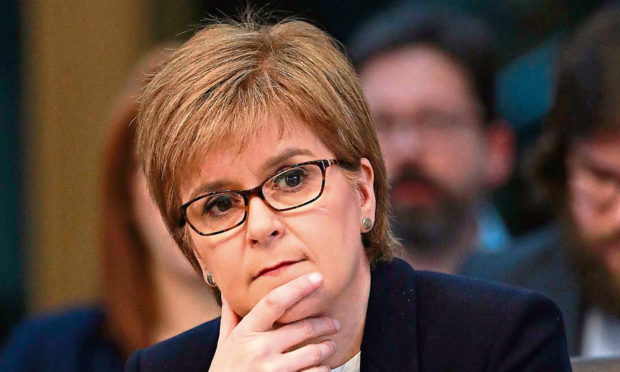Nicola Sturgeon has been in London this week trying to change the course of Brexit. That’s her explanation anyway.
Yesterday, she saw Theresa May, and she was also hoping to meet up with Jeremy Corbyn.
Neither the prime minister nor the leader of the opposition can give Sturgeon what she wants, which is Scottish independence, but at this late stage in the European exit strategy the SNP chief has to be seen to be doing something.
On Sunday, in an interview on the BBC with Andrew Marr, she said Scotland had been sidelined. What she actually meant was that she, Scotland’s first minister, had been sidelined, and that will not do.
So, off she went to Westminster to discuss alternatives to May’s draft Brexit deal with opposition parties, claiming she was acting “in the interests of people the length and breadth of the UK”.
As she is demanding an agreement with Europe that would allow Britain to stay in the single market and customs union – many British voters will undoubtedly support her position.
She also has backing for her efforts from the Scottish Labour Party, which hopes she and Corbyn can present a united front against May.
However, the idea that Sturgeon is acting in the interests of anyone but herself and the Scottish nationalists is nonsense.
Even representing the interests of her own countrymen and women has proved impossible since her party has been in government, with those outside the separatist fold (a clear majority, remember) often made to feel anti-Scottish.
She forgets, too, that people the length and breadth of the UK voted, narrowly but decisively, to leave the EU. In fact, half-a-million people who back Scottish independence also opted to leave Europe during the 2016 referendum.
No politician in these isles currently speaks for the people without offending other people because Britain is quite evenly split into two camps over Brexit.
Those clamouring for a “people’s vote”, who include Sturgeon but not Corbyn (who said, in a rare burst of sanity, it was “not an option for today”), can no more pretend to defend British interests than can the SNP.
What did the first minister think her trip south would achieve? She obviously wasn’t going to wring any concessions out of May, who has withstood gruelling Cabinet battles, House of Commons ridicule, treacherous ministers knifing her in the back, and endless rounds with her sanctimonious EU counterparts.
The fact that Sturgeon saw the PM at all rather destroys her argument that Scotland has been denied a voice. Before Sturgeon showed up at No 10, all the Scottish Tory MPs had been invited to Downing Street on Monday.
And the same group, led by Scottish Secretary David Mundell, has been instrumental in securing an acceptable outcome over the Common Fisheries Policy to keep Scottish fishermen (relatively) happy.
Do Scots, who largely voted to remain in Europe, believe the Scottish nationalists are best placed to put their case for them?
Sturgeon had hoped, after the EU referendum, to unite her country behind her, calculating that most voters would flock to the secessionist banner in fury at the leave result.
This, of course, did not happen and the popularity of the SNP has been in something of a decline since. At the moment of peak opportunity, the people did not trust Sturgeon to act in their interests.
Her mission now is to be part of talks, any talks, that show she still has clout on the national stage. Then, when she next appeals to the Scottish electorate, she can at least say she tried to stop Brexit.
But we all know that her only goal in this debate, as in every other debate, is to make Scotland independent.
Her problem is not so much those who remain committed to the UK, despite its break with Brussels, but those who are on her side.
Mhairi Black, the MP for Paisley often hailed as the SNP’s rising star, wrote in the pro Yes newspaper The National: “I am sick and tired of Scotland’s future being dictated by governments we never voted for.”
To which the former SNP deputy leader Jim Fairlie replied on Twitter: “In the EU there’ll be 27 governments we never voted for, dictating our future. Independence in Europe. Aye, right.”
The Yes movement is perhaps less distracted by Brexit than the SNP hierarchy, and growing increasingly impatient.
The Greens’ Patrick Harvie has become the loudest advocate of accelerating the countdown to a second referendum, urging the first minister last week to get a move on.
“There is already surely enough clarity to make a judgment,” he said in response to her apparent caution.
Sturgeon is losing the initiative over independence, and has lost the plot over Brexit.
London was a diversion, but she has nowhere left to go.
